For Tibetans, pilgrimage—or nekor (“circle of the deity”)—is far more than spiritual tourism. It is woven deeply into daily life, cultural identity, and religious expression. From small devotional walks around a local monastery to long treks around Mount Kailash, pilgrimage in Tibetan life is a vehicle for purification, transformation, community, and cultural continuity.

Why Pilgrimage Matters in Tibet
Whether you’re a spiritual traveler or a curious explorer, understanding pilgrimage helps reveal why the landscape itself is sacrosanct, why travelers often join—or witness—acts of prostration, and how this ancient tradition continues to shape Tibetan life today.
1. What Is Tibetan Pilgrimage—and Why Do It?
Pilgrimages in Tibet—called Nekor—can range from short kora walks around a temple to rigorous journeys circumambulating sacred mountains or lakes over days or weeks. The core motivations include:
• Gaining spiritual merit and purifying karma
• Healing illness or safeguarding loved ones
• Fulfilling vows or deepening religious devotion
• Seeking visions, guidance, or blessings from deities
These journeys often involve ritual acts such as:
• Circumambulation (walking clockwise around holy sites)
• Full-body prostrations along pilgrimage paths
• Reciting mantras like Om Mani Padme Hum
• Making offerings—khatas, butter lamps, grains, incense
• Splashing water in lakes or rivers in reverence
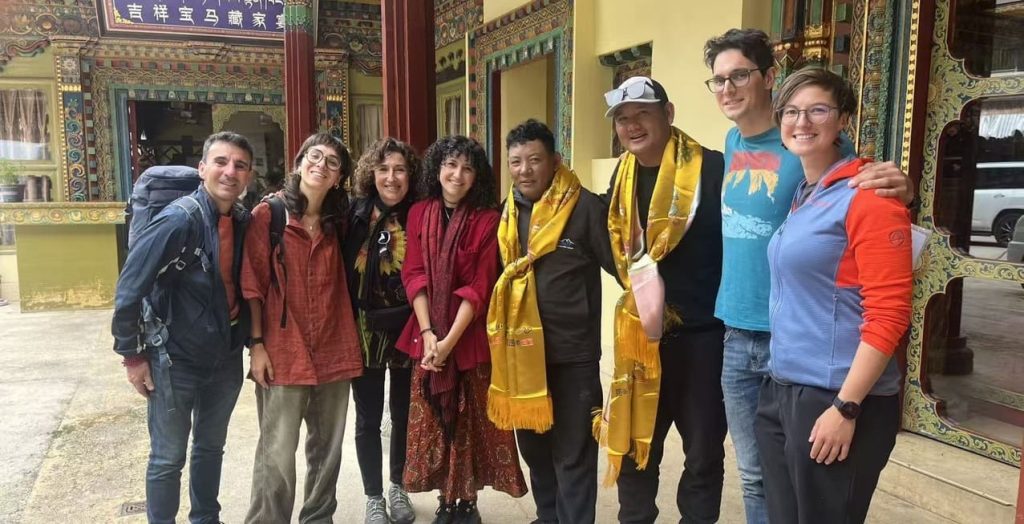
2. Pilgrimage as Spiritual Practice and Life Discipline
Circumambulation (Kora)
Walking clockwise around temples, lakes, or mountains is a devotional act embodying intentions of respect, focus, and purification. As pilgrims tread, they often spin prayer wheels or chant mantras to accumulate merit and cultivate mindfulness.
Prostrations
Some pilgrims perform full-body prostrations—lying flat on the ground, marking a spot, and crawling forward. This intense practice, used especially around Mount Kailash, reflects extreme humility and devotion.
Offerings and Ritual Acts
Tibetans offer ceremonial scarves (khatas), butter lamps, incense, and grains at shrines and monasteries. They bathe in sacred lakes like Manasarovar to cleanse both physical and spiritual impurities.
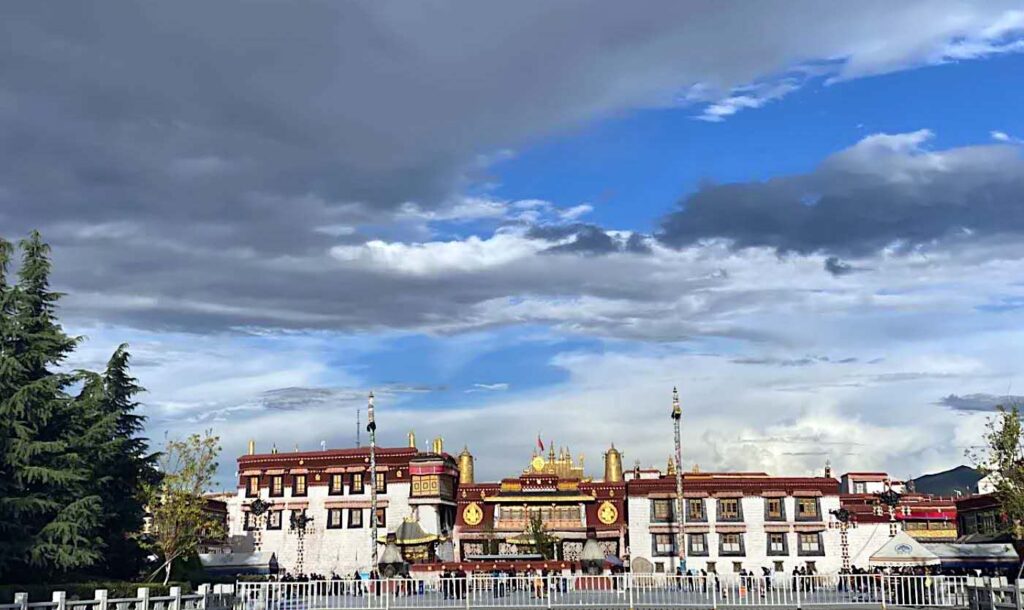
3. Major Pilgrimage Sites & Routes
Jokhang Temple & Barkhor Circuit (Lhasa)
The heart of Tibetan spiritual life, pilgrims prostrate along the Barkhor path around Jokhang Temple, often completing multiple koras per day.
Mount Kailash & Lake Manasarovar
Considered the most sacred pilgrimage in Tibet, devotees of multiple religions walk the Kailash Kora (52 km in three days), bathe in Lake Manasarovar, and engage in prayer rituals for liberation and purification.
Dakpa Sheri / Tsari Valley
Pilgrims journey around the sacred Takpa Sheri mountain in eastern Tibet, through challenging landscapes. The larger Tsari Ringkor pilgrimage occurs once every twelve years and is still considered deeply meritorious.
Sakya, Gyantse & Tashilhunpo
Pilgrims visit the Kumbum stupa (of 100,000 Buddhas) near Gyantse and Tashilhunpo Monastery in Shigatse, performing kora around both to accumulate merit and respect tradition.
More Remote Pilgrimages
Routes like Tsari Valley, Drakmar Cave retreats, or the Lapchi region are deeply sacred, seldom visited by outsiders, and rich with spiritual lore.
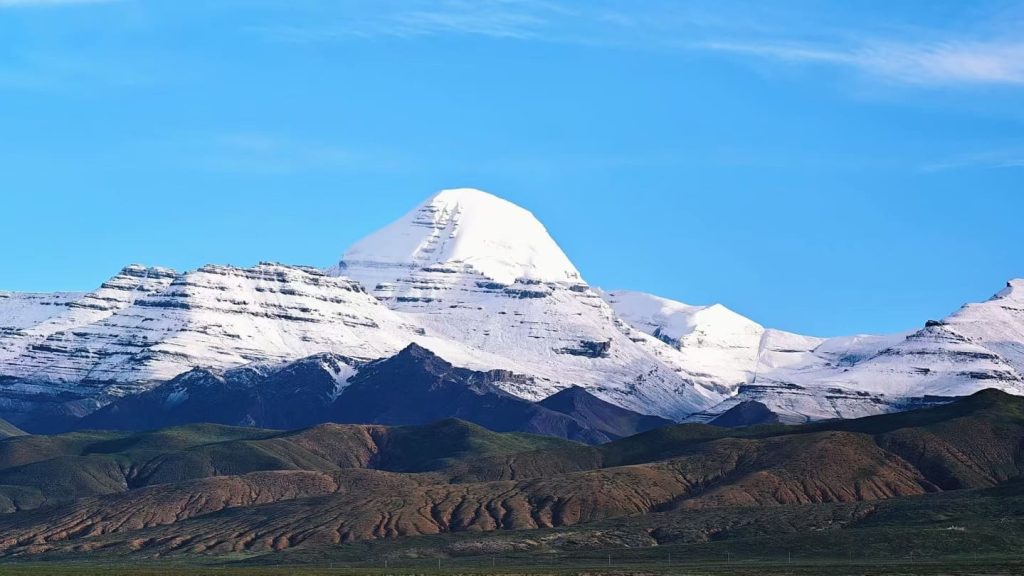
4. Pilgrimage: Identity, Society, and Cultural Exchange
Pilgrimage is not just individual—it’s communal and cultural. Groups of pilgrims often travel together—sometimes mixing by region, family, or monastery lineage—and maintain a disciplined silence or ritual sharing along the way.
These journeys help:
• Forge social bonds across Tibet’s vast plateau
• Break down regional divides, forging spiritual unity
• Offer informal spaces for news, culture, and ideas exchange
Economically, pilgrims bring offerings, support local monasteries financially, and sustain small-scale trade along routes.
5. Modern Changes & Challenges
Although pilgrimage remains central to Tibetan life, modernization and infrastructure development have changed its practice. Roads now allow pilgrims to drive part of their kora, and tourism has brought new dynamics to sacred routes. Still, many pilgrims—especially those seeking full merit—resist shortcuts.
Despite modernization and political constraints, the Tibetan spiritual tradition remains remarkably resilient. Pilgrimage festivals like Saga Dawa, Monlam, and Kailash Yatra continue to draw thousands.
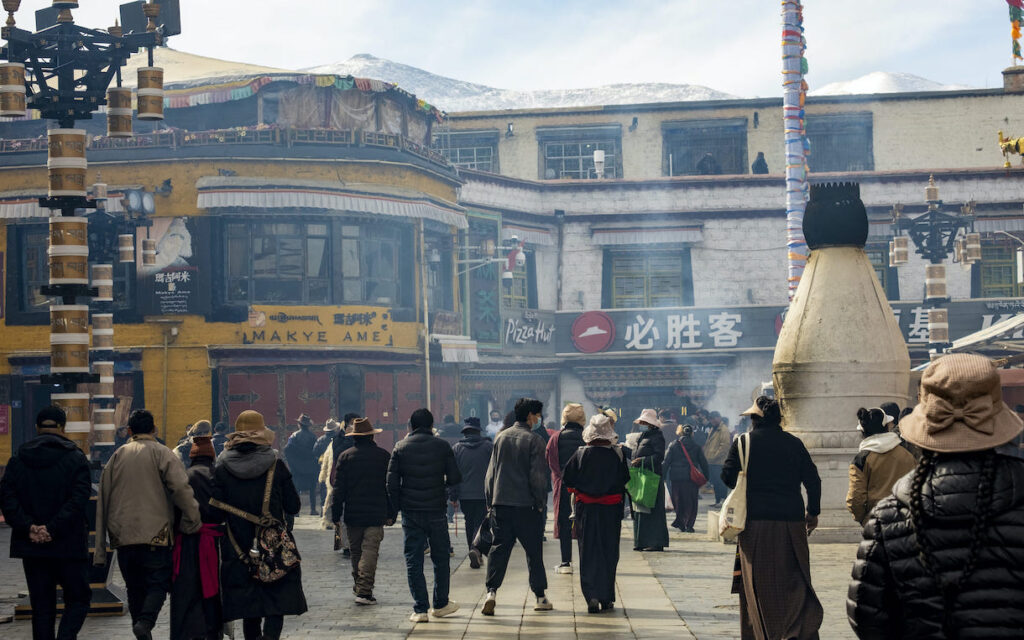
6. Pilgrimage and Travel: For Outsiders Visiting Tibet
For travelers interested in a Tibet tour centered on cultural and spiritual immersion, these are key considerations:
• Best Time: May–October (especially Saga Dawa or Monlam festivals)
• Key Sites to Include:
• Jokhang Temple and Barkhor (Lhasa)
• Pilgrimage routes around Mount Kailash
• Kumbum Stupa (Gyantse), Tashilhunpo Monastery (Shigatse)
• Lhamo La‑tso Oracle Lake (vision site for selecting Dalai Lama reincarnations)
• What to Experience:
• Join or observe pilgrim circumambulation, prostrations, and mantra chanting
• Attend prayer festivals, butter lamp ceremonies, and ritual baths
• Walk with nomadic pilgrims, learn local traditions, and witness spontaneous sacred practices
• Respect etiquette: walk clockwise, avoid photo disruption, dress modestly
7. Spiritual and Personal Impact of Pilgrimage
Pilgrims often return home transformed—reporting mental clarity, emotional release, and renewed spiritual purpose. Many say the physical hardship, combined with ritual, helps them shed burdens and cultivate deeper compassion.
One Reddit pilgrim shared:
“Walking the Kailash kora was like confronting my karma—every step stripped something from me, until all that remained was clarity.”
These experiences underscore why pilgrimage in Tibet is not a hobby—it’s a sacred journey of intention, surrender, and renewal.
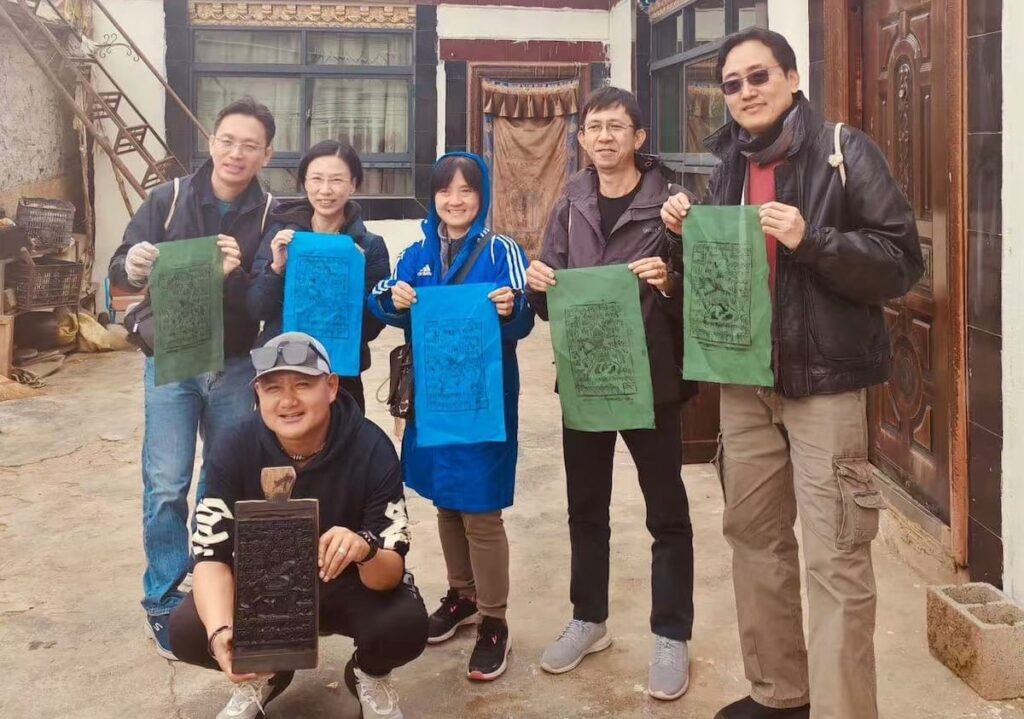
8. Pilgrimage Etiquette & Tips
For respectful participation or observation:
• Walk clockwise around all koras
• Prostrate or bow when appropriate—never trample
• Dress modestly: shoulders, knees covered
• Ask permission before photographing devotees or rituals
• Offer khatas or small donations if invited
• Remain silent or speak softly near groups of pilgrims

Conclusion: A Pilgrim’s Way of Life
In Tibet, pilgrimage isn’t a special event—it’s part of life’s rhythm. Whether walking the Barkhor Circuit in Lhasa, blazing a trail around Mount Kailash, or following lesser-known valley paths, the devotion, endurance, and cultural richness of these journeys offer travelers a window into the heart of Tibetan identity.
For spiritual travelers, a pilgrimage offers more than a destination—it offers meaning, connection, and belonging. For culture seekers, it reveals the threads that bind history, religion, and daily life across centuries on the plateau.
Ready to explore Tibetan pilgrimage routes on your journey?
I can help you design an itinerary that includes sacred koras, festival encounters, remote vision lakes, and immersive interaction with pilgrims. Just ask!
